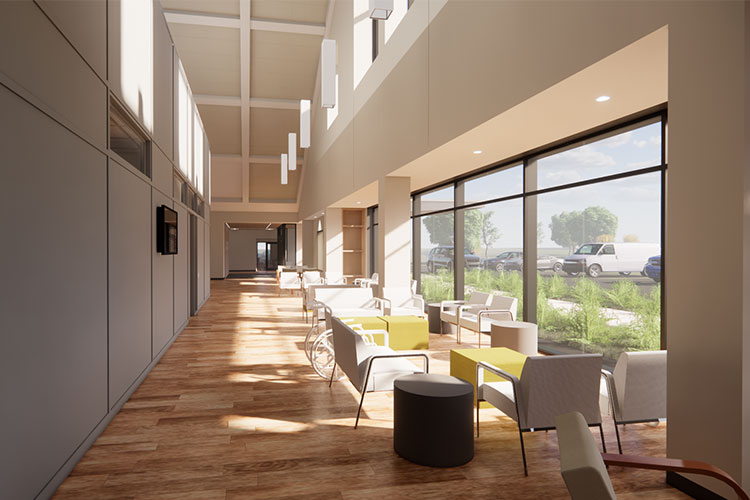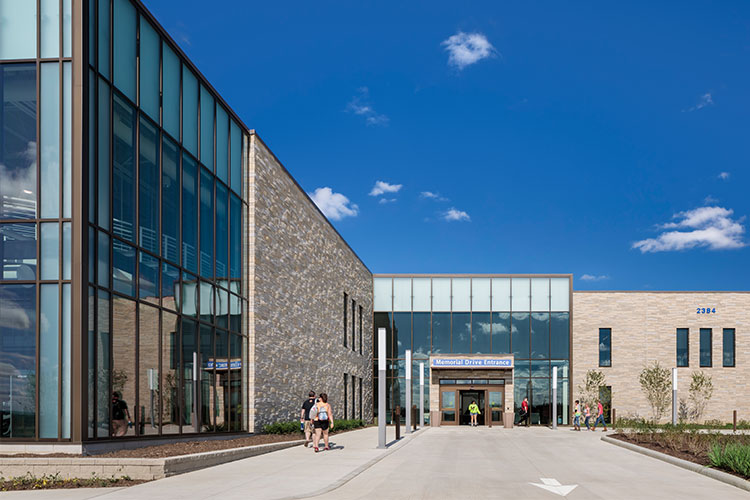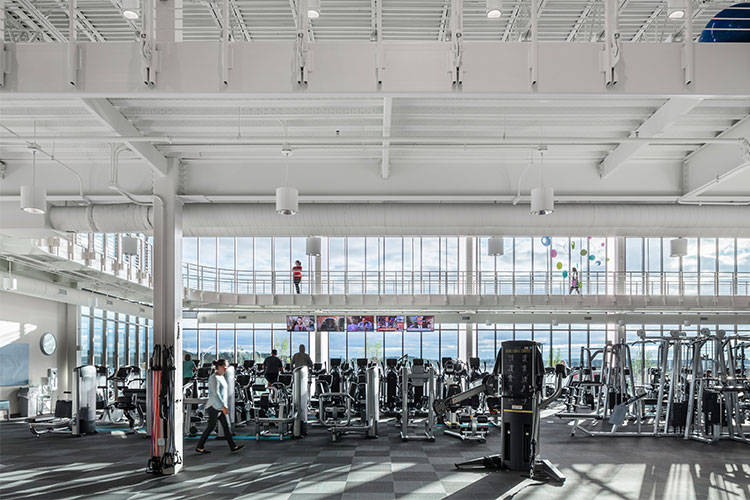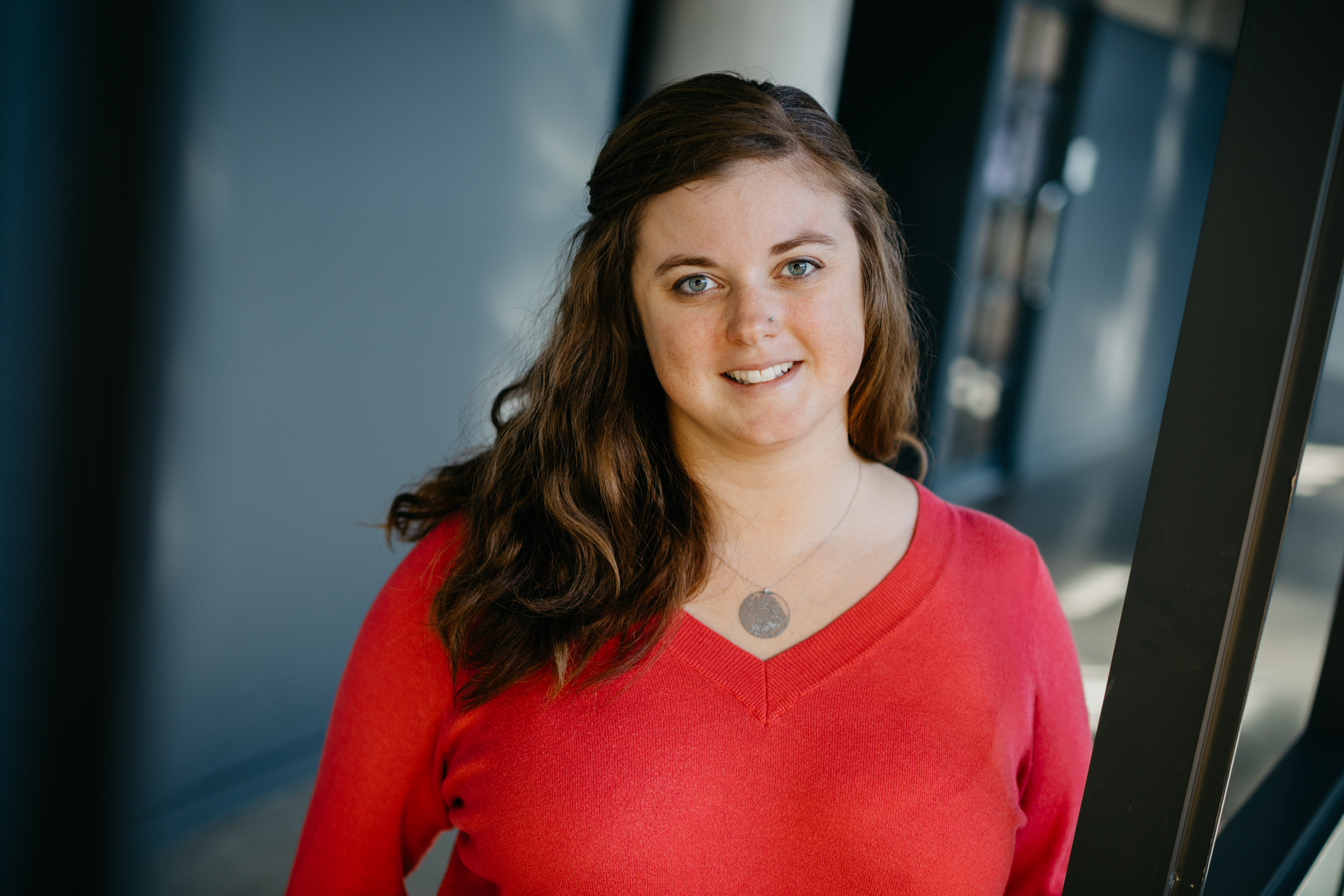Explore how providers are addressing gaps in healthcare access.
By: Christine Carlo, RA, NCARB, LEED Green Associate // Project Architect
It’s a staggering statistic for a first-world nation: Approximately 80% of the U.S. population lacks some access to proper healthcare facilities.[1] These areas, commonly referred to as healthcare deserts, are often categorized as primary-care deserts, trauma center or hospital deserts, pharmacy deserts, community center deserts, and others. Each category has its own challenges but the results are similar: Long travel times discourage patients from seeking routine care. For many, only emergencies bring them in.
These gaps in care disproportionately affect underserved populations in both rural and intercity communities, and in different ways. For example, a pharmacy desert can be defined as an area without access to a pharmacy within 10 miles. In a rural community, the result is often the inability to get competitively priced prescriptions. In urban areas, lack of good public transportation may make the trip overtly difficult or even impossible. In all cases, the patients go without medications to treat their needs. Increasingly, unlikely players such as Walmart are entering the space to provide primary care, counseling, dental, optical, hearing, nutritional services – even lab work and imaging. If local healthcare facilities don’t step up, retailers will.
Because travel time and distance are the defining factors of a healthcare desert, system providers should aspire to balance large, comprehensive, one-stop care centers with more modest facilities that provide localized access. Creating a constellation network of smaller care locations that reach into underserved areas is how these gaps will be filled. Here’s a look at how three groups are addressing the needs of their communities.

Southern Ohio Medical Center - Medical Office Building // Vanceburg, KY
The SOMC Vanceburg Medical Office Building is designed to expand clinical space and provide new services needed by the local community. The existing facility in Vanceburg was outdated and could only offer clinical services. At the time, patients had to travel up to an hour for rehabilitation and imaging, and the closest urgent care was 30 minutes away. The goal of this new medical office building is to reduce patient travel times for these important service lines and provide a one-stop shop for other routine medical needs.
The new building offers a large rehabilitation space with plenty of natural light, x-ray capabilities, and an on-site pharmacy. And as community needs to grow, shell space has been provided for SOMC to expand.

DesignGroup is working hard to make sure the new building fits into the context of the surrounding area. It needs to serve as a symbol of high-level care without intimidating those it was intended to serve. The building is kept at a single story, which is consistent with most of the buildings of the area. The peaked roof and interior wood detailing was inspired by local tobacco barns. To tie it to SOMC’s main campus, large awnings are used to clearly identify entrances and improve wayfinding. The result is a much-needed, and used, health asset in the area.
Fairfield Medical Center – River Valley Campus // Lancaster, Ohio
Another DesignGroup client, Fairfield Medical Center (FMC) expanded its network to encourage preventative care in an underserved area. The new River Valley Campus offers emergency services, women’s health, outpatient care and rehabilitation services. It was designed to serve the rural area between the main campus in Fairfield, Ohio, and the city of Columbus, reducing travel times and providing much needed emergency services to the area.

FMC also partnered with the local YMCA to create a space that elevates the overall health of the community: a dual-purpose rehabilitation center. During business hours, FMC uses the space as a rehabilitation center. YMCA members also have access to the space, with peak times being off hours for FMC.
The space offers several benefits. First, it allows for a seamless transition from rehab to personal fitness. When patients are taught how to use the equipment and become familiar with the space over the span of their care, they’re more likely to continue using the space after formal rehab sessions are complete. It also exposes existing YMCA members to the added services, potentially saving them a trip to a larger facility out of town.

The Ohio State University – The Oral Health Improvement through Outreach (OHIO) Project // Columbus, Ohio
In a large urban area like Columbus, even with the high number of hospitals and ample public transportation, cost can deter people from seeking the care they need. To address these issues, Ohio State offers several outreach programs. One is the Oral Health Improvement through Outreach (OHIO) Project [2], which partners 4th-year students and associated facility with community dental clinics to increase their capacity. Navigating the OSU campus can be intimidating to some patients; this program strengthens community clinics and makes them much easier to access. The project has been very successful: to date, 180,000 patients have been seen, and 415,000 procedures have been performed.
DesignGroup is continually inspired by healthcare systems that look beyond the convenience of their immediate footprint and look for ways to help those who are often underserved. Regardless of the facility size, every patient counts. We love helping find ways to serve more communities, more effectively. To learn how facility design can help your system reach more people in need, please contact us.

Christine Carlo, RA, NCARB, LEED Green Associate // Project Architect
Christine is a licensed architect who loves working in healthcare because of the high impact well designed spaces have on patients and staff. As a Project Architect, she works through all phases from design to construction to ensure the final built product matches the vision. She is passionate about communicating with the team and asking questions to find the best possible solution for any space.
Sources:
